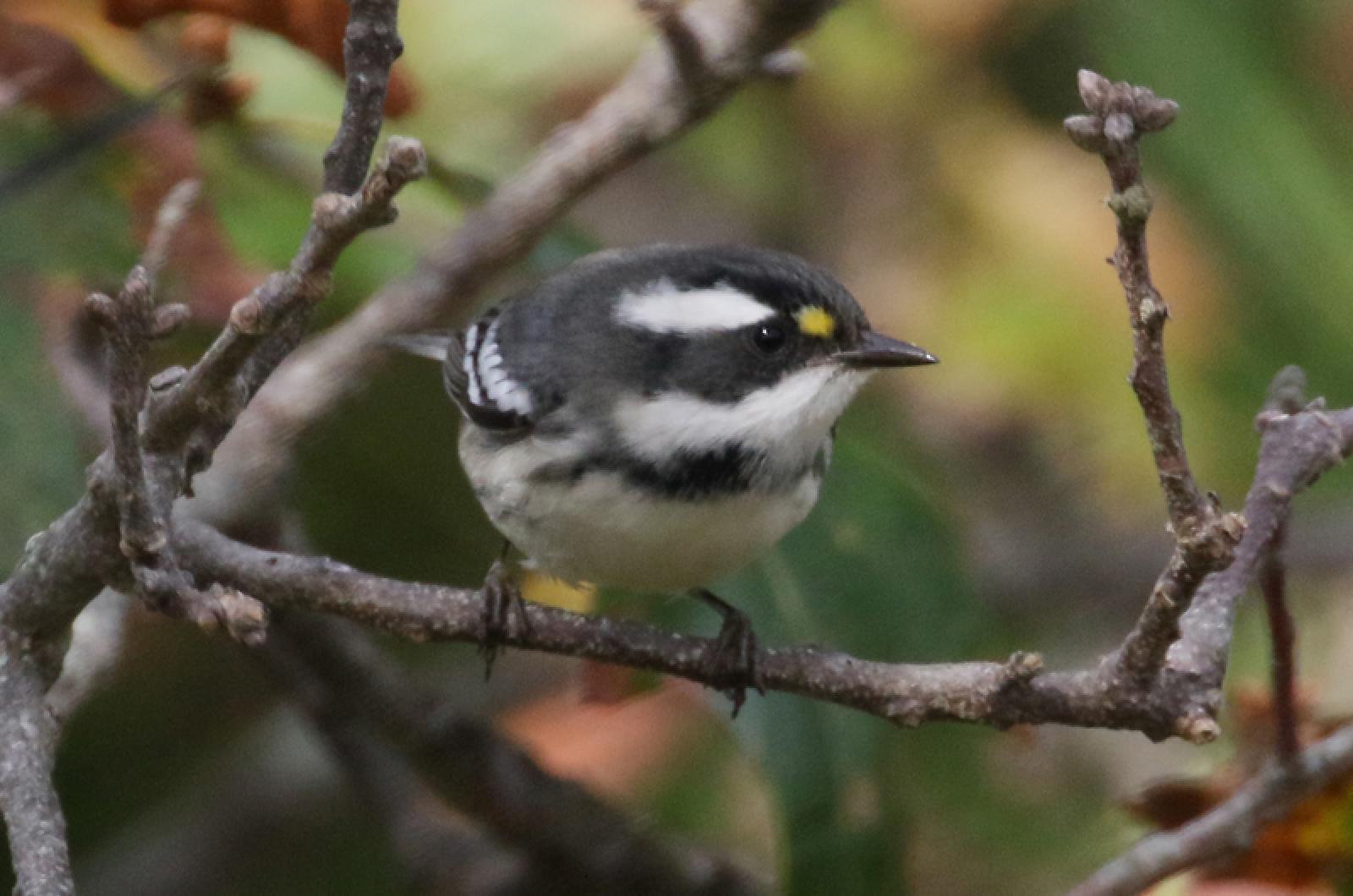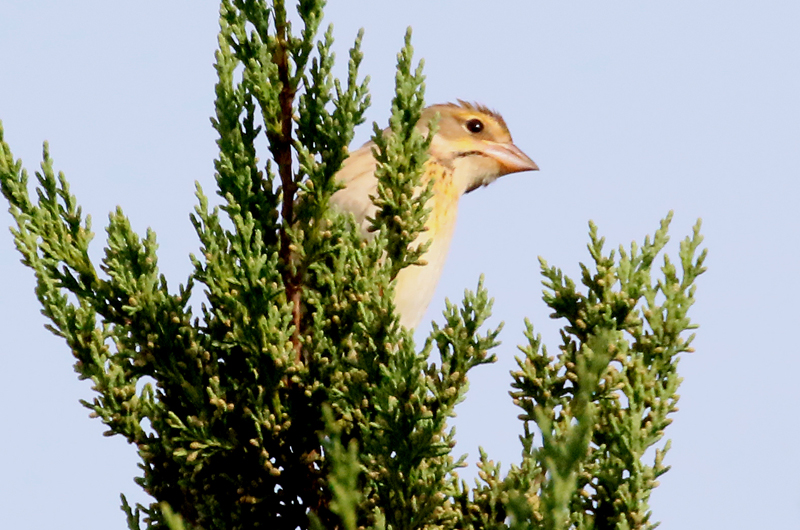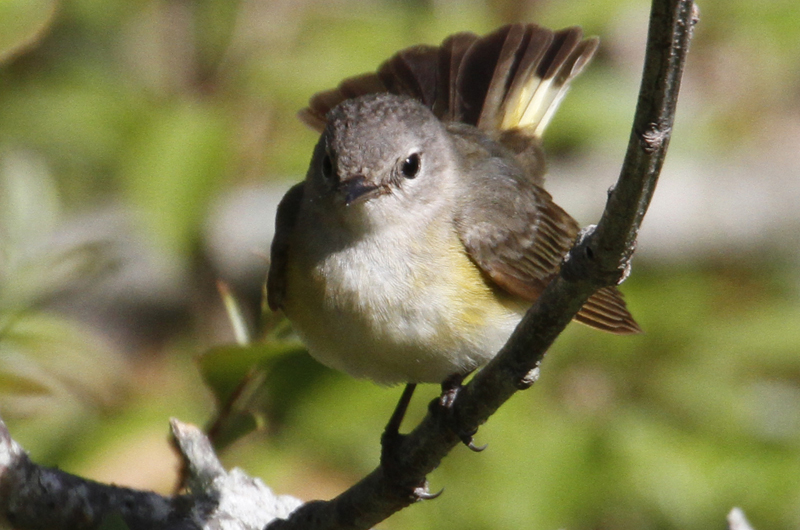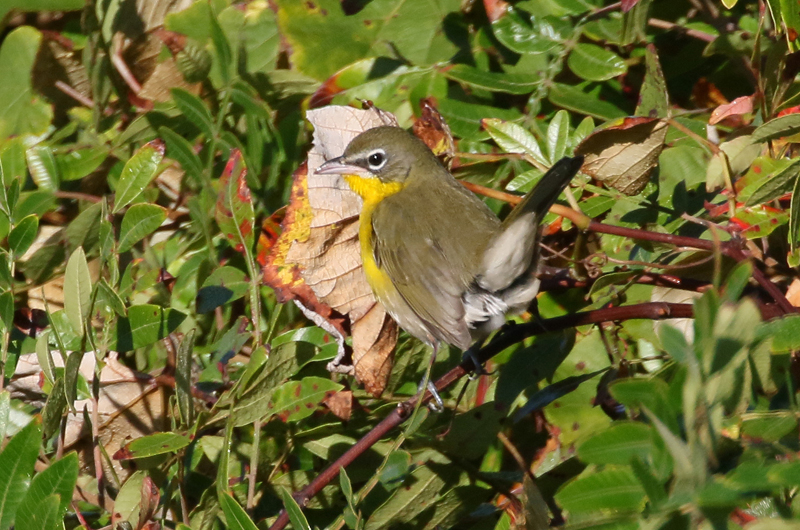Good golly it never fails! I go away for part of the weekend and a very unusual warbler shows up. And it just so happens that it is one of my favorite warblers, as it was one of the first western strays I identified on my own, back when I was a beginning birder.
On Oct. 8, Lanny McDowell, Ken Magnuson and Bob Shriber found a male black-throated gray warbler near Squibnocket Pond. It is only the sixth time this species has been observed on the Vineyard. And as usual when such a rarity is found, others were immediately notified by phone. As a result, Soo Whiting, Flip Harrington, Pat Hughes, Sally Hughes, Hal Minis and Allen Keith were all able to see the bird.
Why is it a rare sighting? It is unusual anywhere east of the Rocky Mountains. And it is a short-distance migrant, flying southward along the mountains or the Pacific coastline. According to the website ebird.org, the furthest east this species has been observed this fall is one sighting on the Gulf of Mexico coast near the border between Texas and Louisiana. Until now. The most recent previous Vineyard sighting was on Sept. 11, 2010, by Soo Whiting at the Gay Head Cliffs.
This gray, black and white warbler could easily be confused with a black and white warbler. Many suggest it looks like a cross between that warbler and a black-capped chickadee. The black-throated gray warbler has not been seen since Oct. 8, but it could well be tucked away in some unknown locale. We may or may not find it again, but there certainly will be more western strays that show up.
Bird Sightings
On Oct. 10 Lanny McDowell, Bob Shriber and Ken Magnuson visited Norton Point Beach and found all three falcon species: peregrine, merlin and kestrel, short-billed dowitcher, wood duck, red knot, and semipalmated sandpiper. Songbirds included a Baltimore oriole and an eastern meadowlark.
On Oct. 8, before they found the black-throated gray warbler mentioned above, Lanny and Bob found a dickcissel and an American redstart at the Gay Head Cliffs. At the same location the previous day he, Allen Keith, Bob Shriber and Pete Gilmore found field sparrow, yellow-breasted chat, house wren, brown creeper, and northern flicker.
Bill Post, along with Ken Magnuson and Allen Keith, observed some dark-eyed juncos on Oct. 8 at the Gay Head cliffs, as well as northern parula, black-throated green warbler, red-eyed vireo, ruby-crowned kinglet, palm warbler, yellow-rumped warbler, merlin, peregrine falcon, and yellow-bellied sapsucker.
Shortly after Soo Whiting observed the black-throated gray warbler she returned home to find a chestnut-sided warbler bathing in the bird bath. This species is an uncommon fall transient more commonly seen in the spring.
Ken Magnuson observed two blue-winged teal at the Edgartown Golf Club on Oct. 9. On Oct. 7 he found swamp sparrows, the first dark-eyed junco of the season, blue-headed vireo, Nashville warbler, and palm warbler.
Belted kingfishers are one of the few species where the female — with its brown stripe across the belly — is more colorful that the male. Jeff Bernier found a female kingfisher at the Sheriff’s Meadow Sanctuary near downtown Edgartown on Oct. 7. The previous day he found a family of wood ducks at Cranberry Acres, and a pair was still present there when I visited on Oct. 10.
The number of people having Carolina wrens in their yard is steadily increasing after the severe winter knocked their population back almost two years ago. Laurie Meyst is the latest to have them return to her yard, on the morning of Oct. 8. Everybody seems happy to get them back, even though they can be quite noisy all day, including early in the morning.
Although the frequency of screech owl calls appears to be much less than it was one to two months ago, David Padulo still has one calling in Katama.
My Oct. 8 guided birding tour went to Thimble Farm in search of migrating songbirds, but all was pretty much silent there. We finally found a flock of chipping sparrows, several pine warblers, at least one palm warbler and a flicker. Then on to shorebirds; at Sarson’s Island there were three American
oystercatchers, four laughing gulls, and four black-bellied plovers. There were about 25 double-crested cormorants, down from a count of 200 or so in late September. Then we traveled to the Ocean Heights boat-launching ramp, where we found a flock of 20 greater yellowlegs.
On Oct. 5 Nathalie Woodruff observed a red-breasted nuthatch in her Oak Bluffs yard. Nelson Smith has also observed them at his house in Edgartown. And Norma Holmes had one in her Katama yard for the first few days of October.
The two known coveys of bobwhite were both seen recently. Lanny McDowell found the Squibnocket area covey of seven or eight birds on Oct. 8, and Judy Bryant found the Middle Road covey of 15 birds on Oct. 7. Both of these coveys have been reported regularly since at least mid-summer, so they are unlikely to be birds released just prior to the start of hunting season. By the way, the hunting season for quail and squirrels starts on Oct. 15, so please be careful and be sure to wear hunter orange if you are out and about in the fields and woods.
Finally, there are reports of two late migrants. Dick Jennings called to report that a ruby-throated hummingbird is still hanging out in his yard on Oct. 10. And I observed a lone male osprey perched in a tree at the Oak Bluffs pumping station on Oct. 8. How much longer will these individuals stick around?
Southbound migrants are passing through in large numbers; please look for them and report your sightings to birds@mvgazette.com.
Robert Culbert leads Saturday morning guided birding tours and is an ecological consultant living in Vineyard Haven.








Comments
Comment policy »